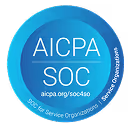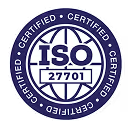Introduction to project profitability
Professionals in any service-based industry understand that every project is a potential goldmine and profitability is the lifeblood of their business. However, distinguishing successfully completed projects from truly profitable ones requires a thorough understanding of project profitability. But how do you measure project profitability effectively, and what strategies can you employ to enhance it? In this guide, we'll dive deep into the intricacies of project profitability, explore various metrics and indices, and provide actionable tips to boost your profit margins.
Project profitability in professional services
So what exactly is 'project profitability'? In simplest terms, it's a measurement used to determine the gainfulness of a project after all expenses are deducted. However, for professional services, defining project profitability goes beyond basic revenue minus expenditure equations. It involves considering factors such as:
- The time invested in the project, as time is a non-renewable resource.
- The human resources used, taking into account the varying cost of manpower at different skill levels.
- The utilization of assets and their effective management.
- The investment made in technological infrastructure.
A proficient understanding of project profitability for professional services isn't just about calculating profits. It's about comprehending the margins between invested resources and returns, and also about making strategic decisions based on this understanding.
The Importance of project profitability
Project profitability is essential for numerous reasons:
- Profitable projects contribute positively to the organization's bottom line. They show you where your business is making money, giving insight into what works for your organization.
- By identifying profitable projects, you can replicate their successful models for future projects.
- Monitoring profitability allows you to address underperforming areas, controlling costs and improving efficiency.
- It helps in strategic pricing of services for competitiveness in the market.
By making project profitability a key part of your financial management, you can better align your projects with profitable outcomes and make informed decisions for the future. Understanding project profitability isn’t merely an fiscal obligation—it’s an insightful move towards a sustainable business model.
Advantages of measuring project profitability
Analyzing project profitability has several potential benefits. These range from the rational utilization of your resources and establishing optimal pricing strategies, to the informed planning of future endeavors. Let's dissect these advantages one-by-one.
Efficient resource management
Firstly, understanding your project’s profitability can help in efficiently managing resources. Projects often consume considerable manpower, funding, and time, which are all valuable resources in any organization. So, it goes unsaid that every project should justify this substantial resource investment. But how can we ensure this?
Identify unprofitable projects: By measuring a project's profitability, you can quickly identify whether the deployed resources are being used effectively or wasted on unprofitable projects. This allows the organization to either make required amendments or cease such projects, redirecting the resources to lucrative endeavors.
Optimize resource allocation: Knowing profitability further offers an insight into how resources can be allocated effectively. For instance, it can help you decide if a project necessitates more investment or if there's room to tighten budgets without compromising outcomes.
Determining pricing strategy
Another significant benefit of measuring project profitability is that it assists in forming effective pricing strategies. In professional services, pricing services appropriately is paramount to maintain both competitiveness in the market and profitability.
Establish appropriate rates: By understanding the project's profitability metrics, you can calculate the minimum rate required to ensure profits. Besides, it offers a basis to decide if the value provided justifies higher pricing.
Mitigate underpricing risks: The understanding of profitability also helps prevent the common pitfall of underpricing which might make you win more contracts but at the cost of profit margins. Thus, it’s fundamental to balance competitiveness with profit considerations.
Planning for future ventures
Lastly, gauging project profitability is a pivotal input in planning future ventures. For continuity and growth, professional service organizations must ensure that the project pipeline is profitable.
Determine potential ventures: Profitability analysis can help project the financial success of potential projects based on historical data, thus aiding in selecting profitable ventures.
Risk sssessment: Understanding the profitability landscape also assists in identifying and assessing risks associated with new projects. Thus, you can adopt mitigation strategies early in the planning phase, ensuring financial success.
In summary, the benefits of measuring project profitability are multifaceted, influencing resource management, pricing strategies, and planning for future investments.
Understanding profit margins for project management
Profit margins are essential metrics for evaluating the profitability of your professional services projects. Two key profit margins to consider are the gross profit margin and the net profit margin.
Increasing profit margins
Boosting profit margins in professional services projects can be challenging, but it's achievable with the right strategies. Here are four actionable steps to help you increase your profit margins:
1. Eliminate scope creep
Scope creep occurs when additional work is introduced into a project without proper evaluation and compensation. To prevent scope creep, define project scope clearly from the beginning and establish a robust change management process.
2. Cut clients and projects with low profit margins
Not all clients and projects are equally profitable. Analyze your client portfolio and identify projects that consistently have low profit margins. Consider reallocating resources to more lucrative projects or terminating unprofitable client relationships.
3. Use time tracking software to measure employee utilization
Efficient resource allocation is crucial for profitability. Time tracking software allows you to monitor how employees allocate their time, identify bottlenecks, and ensure that billable hours are maximized.
4. Make client retention a business priority
Retaining existing clients is often more cost-effective than acquiring new ones. Prioritize client satisfaction, communication, and relationship-building to encourage repeat business and referrals.
What is project time tracking?
Project time tracking is a critical practice in professional services for monitoring and recording the time spent on various project activities. It offers several advantages, including:
- Resource management: It helps in optimizing resource allocation by identifying overworked or underutilized team members.
- Project time tracking: It provides insights into project progress, enabling you to identify areas that may require additional attention or resources.
- Tracking productivity: Time tracking enables you to assess individual and team productivity, facilitating performance evaluations and improvements.
Tracking productivity
Productivity in professional services projects is a key driver of profitability. Tracking productivity allows you to identify areas where efficiency can be improved. Some essential productivity metrics to monitor include:
- Billable hours: The percentage of hours spent on billable tasks compared to total working hours.
- Utilization rate: The ratio of billable hours to available hours.
- Project completion rate: The percentage of projects completed on time and within budget.
- Client satisfaction: Client feedback and satisfaction scores can provide insights into service quality and project management efficiency.
Employee utilization rates
Calculating employee utilization rates is crucial for resource optimization. The formula for calculating utilization rate is:
**Utilization Rate = (Billable Hours / Available)
Understanding key profitability metrics
Profitability metrics are financial measurements used by organizations to assess their performance, efficiency, and sustainability in the business environment. These metrics facilitate informed decision making, allowing organizations to understand their financial status and devise strategies for growth.
Profitability Index
The profitability index (PI) is a valuable metric for assessing project profitability. It helps you determine whether a project is financially viable and whether it will yield a return that justifies the investment. The profitability index is calculated as follows:
Profitability Index (PI) = Present value of cash flows / Initial Investment
Here's how to interpret the results of the profitability index:
If the index is less than 1:
A PI below 1 indicates that the project's expected cash flows are less than the initial investment. In such cases, the project is not considered financially viable, and proceeding with it may result in losses.
If the index is equal to 1:
A PI of 1 means that the project's expected cash flows are exactly equal to the initial investment. While the project is expected to break even, it may not generate substantial profits.
If the index is greater than 1:
A PI exceeding 1 indicates that the project's expected cash flows are greater than the initial investment. This signifies that the project is expected to be profitable, and the higher the PI, the more attractive the project becomes.
The profitability index is a valuable tool for prioritizing projects and making informed investment decisions.
Gross Profit margin
The gross profit margin is a profitability ratio that indicates how efficiently a firm is using its direct materials and labor in the production process. It's calculated by subtracting the cost of goods sold (COGS) from revenue and then dividing that number by revenue. In terms of project profitability for professional services, the cost of goods sold can be comprised of labor costs, materials, equipment, travel, and other project-specific expenses.
Gross Profit margin = (Gross Profit / Revenue) x 100
- A higher gross profit margin indicates a higher efficiency in turning raw materials and labor into income.
- Conversely, a lower profit margin might suggest inefficiencies or an overly expensive project.
In essence, gross profit margin is an excellent measure of how well a professional service company manages its projects in relation to the costs directly tied to them.
Net profit margin
Net Profit Margin, on the other hand, gives you a fuller picture of profitability by considering all operational costs, not just the direct project costs. This includes overhead, administrative expenses, interest on debt, and taxes. It's calculated by taking the net income and dividing it by total revenue.
Net profit margin = (Net profit / Revenue) x 100
- A high net profit margin exhibits a good control over total costs relating to the project.
- A low net profit margin may indicate spending too much on indirect expenses or not pricing services appropriately.
Monitoring net profit margin regularly helps businesses assess their overall operational efficiency and pricing structure.
What is a good profit margin?
The definition of a "good" profit margin can vary depending on your industry, business model, and market conditions. However, a healthy profit margin is generally considered to be one that allows your business to cover all its operating costs, generate profits, and invest in growth. As a benchmark, many professional service firms aim for a net profit margin of 15% or higher.
Return on Investment (ROI)
ROI is a must-know metric for all businesses. For professional service organizations, ROI can measure the profitability of individual projects by showcasing the amount of return on a particular project relative to its cost.
Calculating ROI involves subtracting the cost of the project from the gain from the project and then dividing the result by the project cost. The outcome offers a percentage that reflects how much of the project cost was recouped in profits.
Tracking ROI enables firms in making data-backed decisions whether to pursue similar projects in the future or not, propelling strategic growth.
In conclusion, understanding and measuring these key profitability metrics allows professional service companies to gauge their financial health better and optimize business strategies.
Practical methods to measure project profitability
Understanding and maximizing project profitability calls for reliable methods of financial tracking and measurement. Below, let's break down practical measurement strategies based on time, material, fixed costs, and employee contribution.
Time-based metrics
Time-based metrics are most suitable for tracking project costs that are dependent on the labor hours put into the project. This strategy often results in an authentic picture of project profitability as it paints cost trends over time during the project lifecycle. Elements you should account for include:
Direct labor costs: including wages and benefits for actual hours worked.
Overhead costs: Business-related costs not directly tied to a particular project, like utilities, rent, and administrative expenses.
These components form the basis for a cost reality check. It’s important to consistently track these variable costs and compare them with initial cost estimations throughout the project cycle. If actual costs outstep planned values too often, it might be time to reevaluate your estimation model or the scope of your project budget.
Revenue realized per employee
A slightly different approach to measuring project profitability is calculating the revenue realized per employee. This metric illustrates the average revenue that each employee brings to your company. However straightforward it might appear, this approach demands a comprehensive understanding of your overhead costs, personnel expenses, and revenue trends.
With everything factored in, the revenue realized per employee can provide insights into how efficiently resources are being utilized within your organization. It essentially showcases the return on investment for every team member, helping to identify areas that might need additional resource allocation, re-structuring, or training to maximize profitability.
By simplifying profitability into these three practical metrics, professional service providers can celebrate a step towards concrete financial management and ultimately- profitable project outcomes.
Tactics to maximize project returns
To effectively drive project profitability, it's important to maximize project returns. This involves techniques that not only deliver high-quality service but also optimize the use of resources and time. We've rounded up a few proactive strategies that will help lift your professional services’ profitability.
Efficient team management
Your team is undoubtedly your most valuable asset. When managed efficiently, they can facilitate astounding project outcomes that translate to high profitability. Here are a few tips to improve team management:
- Focus on team strengths: Identify the strengths of each team member and delegate tasks accordingly. This will not only increase work quality but also speed up project completion.
- Training and development programs: Regular training ensures your team's skills remain relevant and competitive. This investment pays off tenfold when they implement these skills in their project roles.
- Promote well-being: An overworked team will likely face burnout and lose productivity. Introducing measures to maintain a healthy work-life balance can indirectly influence project profitability.
Leveraging tech and software
In the 21st century, utilizing technological advancements is no longer optional; it's vital. Various software solutions can simplify processes, streamline operations, and ultimately boost profitability:
- Project management tools: These help manage workflows, track project timelines, and monitor individual performance, allowing for timely interventions and modifications.
- Time-tracking software: By using this, you can accurately bill your clients for the hours worked and avoid overruns or under-utilization of time.
- Data analysis tools: These provide actionable insights through data visualization and analytical reports that facilitate smarter decision-making.
Improved communication and collaboration
Communication breakdown can lead to costly misunderstandings, and issues left unresolved can sabotage project profitability. Here's how to enhance communication and collaboration amongst your team:
- Regular meetings: These provide a platform for the team to share their progress, process feedback, and brainstorm solutions for any issues encountered.
- Open-door policy: Encourage team members to voice their concerns, ideas, or suggestions directly to the project managers or team leaders. This fosters a culture of transparency.
- Collaborative tools: Deploying such tools simplifies sharing of project information and documents. This in turn, ensures all team members are updated about the project status and can quickly adapt to any changes.
- By advancing team management, leveraging technology, and improving communication, you can go a long way in increasing the returns on your projects, and hence, drive project profitability for your professional services.
The path to improved financial health for professional services firms
The journey to improved financial health for your company starts with a clear understanding and measurement of project profitability. This crucial metric, if used wisely, can pave the way to greater resource efficiency, accurate service pricing, and effective planning for future projects.
Project profitability serves as the heart and soul of the financial health in professional services. It aids in identifying revenue-generating channels and, more importantly, flags project drawbacks or resource drains. By leveraging profitability metrics, you can make data-informed adjustments that could boost your project profit margins. This, in turn, improves the overall financial health of your professional services firm. Imagine, instead of just hoping for positive figures on your financial reports, you take proactive steps guided by data to ensure the desired results. That's the tremendous role project profitability plays in financial management.
A few takeaways for maximizing profitability
To truly maximize your project profitability, keep in mind the following key takeaways:
• Prioritize project profitability by cultivating a data-driven culture in your organization.
• Enhance your project delivery methods and practices regularly, guided by the insights derived from profitability metrics.
• Align your service pricing with the value you are providing and consider this in your profitability calculations.
• Continually reassess your budget allocation, ensuring that you place your funds where they bring the most returns.
Remember, project profitability isn't a one-size-fits-all metric. It gets its real power when fine-tuned to the specific needs and characteristics of the professional service in question. By taking a step forward in understanding and measuring your project profitability, you're fostering a financially healthier and more prosperous future for your organization.
FAQs
1. What is project profitability, and why is it important?
Project profitability refers to the financial gain or loss resulting from a specific project undertaken by a professional service firm. It's a measure of the project's success in generating revenue and covering all costs and expenses incurred during its execution. Understanding project profitability is vital for businesses as it helps in decision-making, resource allocation, and strategic planning.
2. How can I calculate project profitability?
To calculate project profitability, you need to consider both revenue and expenses. Start by subtracting all the costs associated with the project, including labor, materials, overheads, and any other direct expenses, from the total revenue generated by the project. The resulting figure will indicate whether the project has yielded a profit or loss.
3. What are the key factors that contribute to project profitability?
Several factors influence project profitability. Some of the crucial ones include accurate estimation of project costs, effective project management, efficient resource allocation, appropriate pricing strategy, timely billing and collection, and effective risk management. By optimizing these factors, you can enhance your project profitability.
4. What metrics should I consider to measure project profitability?
While measuring project profitability, it's important to focus on key performance indicators (KPIs) that provide an accurate assessment of your project's financial health. Some common metrics include gross margin, net profit margin, return on investment (ROI), and revenue per employee. These indicators give you insights into the financial viability of your projects.
5. How can I improve project profitability?
Improving project profitability requires a holistic approach. Start by accurately estimating costs before taking on a project. Next, closely monitor project progress, control expenses, and identify any scope creep or potential risks early on. Implementing effective project management techniques, such as resource allocation and scheduling, can also streamline operations and boost profitability. Additionally, regularly reviewing your pricing strategy and exploring opportunities for value-added services can contribute to increased profitability.
6. Are there any challenges in measuring project profitability?
Yes, measuring project profitability can be challenging due to various reasons. Estimating costs accurately, especially with complex projects, can be tricky. Additionally, ensuring accurate time tracking and expense management can be a challenge. Furthermore, allocating revenue and costs to specific projects, especially in multi-project environments, can be complex. Overcoming these challenges often requires implementing robust project management systems and investing in appropriate tools and technology.












